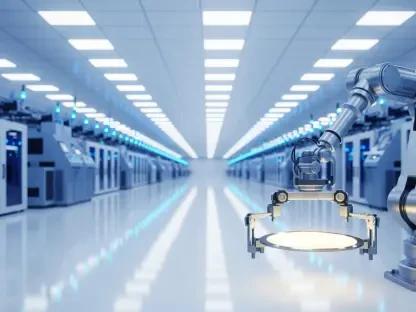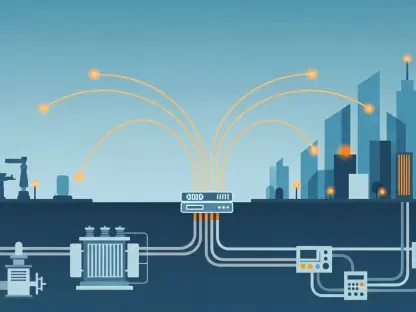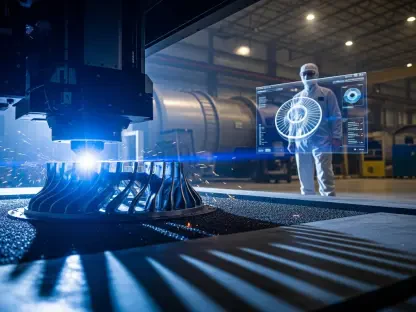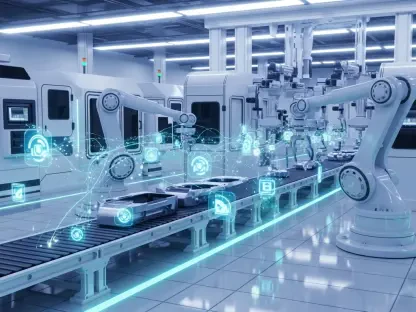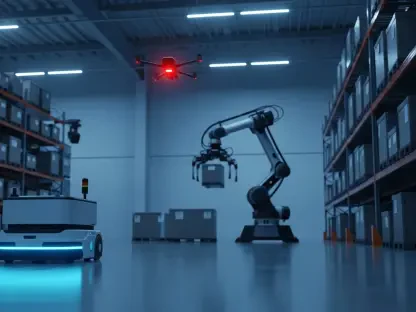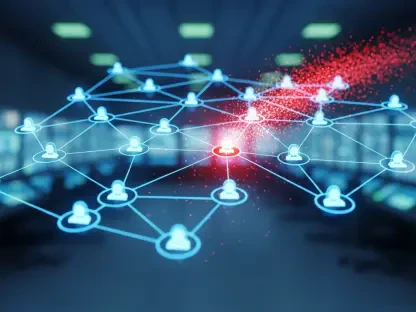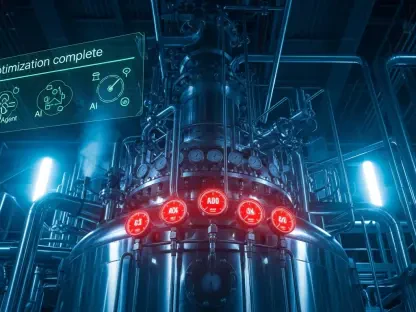In an era where digital threats loom larger than ever, the automotive industry faces an unprecedented challenge: safeguarding complex, interconnected systems from cyberattacks that can halt operations in their tracks. Jaguar Land Rover (JLR), a titan in luxury vehicle manufacturing, recently endured a cyberattack that shuttered production for nearly a month, exposing the fragility of even the most advanced enterprises. This review delves into the technology and strategies underpinning JLR’s recovery process, examining the tools, systems, and methodologies employed to restore operations and fortify defenses. By dissecting this high-profile incident, a clearer picture emerges of how cybersecurity solutions are evolving to meet the demands of modern manufacturing.
Overview of the Cyber Incident and Initial Impact
The cyberattack on JLR struck at the heart of its operations, grinding production to a halt and disrupting the intricate web of supply chains and digital systems. Described by experts as likely a ransomware or destructive intrusion, the breach highlighted the sophisticated nature of threats targeting the automotive sector. This event not only stalled manufacturing but also delayed supplier payments and vehicle wholesales, creating a ripple effect across the company’s global network.
Such incidents are becoming alarmingly common in manufacturing, where the integration of Internet of Things (IoT) devices and digital systems offers both innovation and vulnerability. JLR’s initial response focused on isolating affected systems to limit damage, a critical first step in containing the breach. The scale of disruption underscored the urgent need for robust recovery technologies capable of addressing both immediate fallout and long-term resilience.
Analyzing JLR’s Recovery Technology and Performance
Phased Manufacturing Restart Systems
JLR’s approach to restarting operations relied on a controlled, phased rollout supported by meticulously coordinated technology. The company communicated transparently with employees, retailers, and suppliers, announcing that some manufacturing facilities would resume activity in the coming days. This step marked a significant milestone, leveraging diagnostic tools to ensure systems were secure before reactivation.
Underpinning this restart were advanced monitoring solutions that assessed network stability and flagged potential risks in real time. The technology allowed for a gradual ramp-up, minimizing the chance of further disruption. This methodical process, while time-intensive, demonstrated how recovery systems prioritize safety over speed in critical industries.
The importance of this phased approach cannot be overstated, as it provided a framework for testing and validating operational integrity. By integrating automation and cybersecurity checks, JLR ensured that each stage of the restart aligned with stringent safety protocols, setting a precedent for how recovery technology can balance urgency with caution.
Restoration of Digital and Financial Infrastructure
A cornerstone of JLR’s recovery involved the restoration of key digital assets, particularly IT systems for invoicing and financial processing for vehicle wholesales. Bringing these systems back online required secure backup solutions and rigorous testing to confirm that no malicious code lingered. The technology used here focused on data integrity, ensuring that transactions could resume without compromising security.
This restoration directly addressed a backlog of supplier payments, a critical pain point during the shutdown. By deploying cloud-based recovery tools, JLR accelerated the process of clearing financial bottlenecks, thereby improving cash flow and stabilizing partnerships. The speed of this recovery showcased the effectiveness of modern disaster recovery software in handling complex datasets.
Beyond immediate financial relief, the technology also rebuilt trust in digital operations. Encrypted communication channels and multi-factor authentication played a pivotal role in securing these systems against future breaches. This layer of protection highlighted how recovery technology extends beyond mere restoration to proactive defense.
Revival of Global Parts Logistics Operations
The return to full functionality at JLR’s Global Parts Logistics Center was another triumph of recovery technology, enabling the supply of parts to global distribution centers and retail partners. Advanced logistics software, paired with real-time tracking systems, facilitated a seamless reintegration of this critical hub. This step ensured that vehicle servicing could resume, supporting retailers and customers alike.
The technology behind this revival included automated inventory management tools that prioritized urgent shipments while maintaining security protocols. By integrating cybersecurity measures into logistics platforms, JLR mitigated risks of further intrusions during this vulnerable recovery phase. Such innovations reflect the dual focus on operational efficiency and digital safety.
This achievement also underscored the interconnected nature of recovery efforts, as logistics systems relied on stable IT infrastructure. The successful reactivation of this center demonstrated how recovery technology can synchronize disparate elements of a business, ensuring that no single component lags behind in the broader restoration journey.
Expert Perspectives on Recovery Technology Challenges
Cybersecurity experts, including former FBI agent Eric O’Neill, have shed light on the technological hurdles JLR faces in its recovery. The attack, potentially a ransomware or destructive intrusion, demanded more than a simple system reboot; it required a complete overhaul of compromised infrastructure. Experts emphasize that recovery tools must be paired with forensic analysis software to trace the breach’s origins and eliminate lingering threats.
The timeline for full operational restoration, estimated at up to a year, reflects the complexity of rebuilding trust in system integrity. Technologies like endpoint detection and response (EDR) systems are critical in this phase, offering continuous monitoring to prevent reentry by attackers. This long-term perspective reveals the limitations of even the most advanced recovery solutions when pitted against sophisticated cyber threats.
Moreover, expert insights point to the need for adaptive technologies that evolve with emerging threats. Zero-trust architectures and network segmentation, often cited as essential, require significant investment and integration into existing systems. These observations highlight that recovery technology is not a one-time fix but an ongoing commitment to vigilance and improvement.
Incident Response Technology in Action
Containment and Eradication Mechanisms
At the core of JLR’s incident response was technology designed for containment and eradication, isolating affected systems to prevent further damage. Firewalls and intrusion prevention systems played a vital role in blocking attacker access, while automated scripts helped remove malicious footholds. These tools ensured that the breach did not spread to unaffected areas of the network.
The process also involved continuous scanning to confirm that no backdoors remained, a task reliant on advanced threat detection platforms. Such technology allowed JLR to methodically cleanse its systems, a painstaking but necessary step. The focus on eradication underscored the importance of precision in recovery efforts, ensuring no trace of the attacker persisted.
This phase demonstrated how containment technology must balance speed with thoroughness, as premature reactivation risks reintroducing vulnerabilities. By leveraging automated isolation tools, JLR set a strong foundation for subsequent recovery stages. The effectiveness of these systems serves as a benchmark for other manufacturers facing similar crises.
Forensic Analysis and System Restoration Tools
Forensic technology was instrumental in uncovering how the breach occurred, using log analysis and malware reverse-engineering to pinpoint the attack’s entry point. These tools provided actionable insights, guiding JLR in restoring systems from clean backups predating the incident. The emphasis on uncontaminated data was critical to ensuring a secure restart.
Restoration technology, including automated backup solutions, faced the challenge of verifying system integrity at every step. Manual oversight complemented these tools, addressing anomalies that automated scans might miss. This dual approach highlighted the synergy between human expertise and technological precision in rebuilding a compromised infrastructure.
The process also revealed gaps in pre-attack preparedness, prompting a reevaluation of backup frequency and storage security. By integrating lessons learned into future recovery strategies, JLR showcased how forensic and restoration technologies drive not just recovery but also long-term improvement. This iterative learning process is a hallmark of effective cybersecurity solutions.
Resilience-Building and Preventive Technologies
Post-attack, JLR’s focus shifted to resilience, employing technologies like patch management systems to address vulnerabilities exploited during the breach. Enhanced monitoring tools, capable of detecting anomalies in real time, were deployed to prevent future disruptions. These solutions marked a shift from reactive to proactive defense, a critical evolution in recovery technology.
Zero-trust networks and redundancy systems emerged as key recommendations for building a fortified digital environment. Implementing these technologies requires a cultural shift toward continuous threat hunting, ensuring that passive defenses are supplemented by active surveillance. JLR’s adoption of such measures reflects a broader industry trend toward comprehensive cybersecurity frameworks.
The integration of disaster recovery plans with cutting-edge technology also played a pivotal role in this phase. By simulating potential attack scenarios through advanced modeling software, JLR could identify weaknesses before they were exploited again. This forward-thinking application of recovery technology sets a standard for resilience in high-stakes industries.
Broader Implications for Automotive Cybersecurity Technology
The JLR cyberattack exposed systemic vulnerabilities in automotive manufacturing, where reliance on digital systems creates both efficiency and risk. Recovery technologies, while effective in restoring operations, also revealed the need for industry-wide standards in cybersecurity preparedness. This incident serves as a catalyst for manufacturers to prioritize robust digital defenses over mere operational continuity.
Supply chain disruptions caused by the attack further emphasized the interconnected nature of modern manufacturing ecosystems. Technologies that secure third-party integrations, such as blockchain for supply chain transparency, are gaining traction as potential solutions. JLR’s experience underscores the urgency of adopting such innovations to protect global networks from cascading failures.
Reputationally, the breach tested customer and partner trust, highlighting the role of transparent communication technologies in crisis management. Digital platforms for real-time updates and stakeholder engagement proved essential in mitigating fallout. This broader impact illustrates how recovery technology extends beyond technical fixes to encompass relational and strategic dimensions.
Final Thoughts on JLR’s Cybersecurity Recovery Journey
Looking back, Jaguar Land Rover’s response to the devastating cyberattack showcased both the strengths and limitations of existing recovery technologies. The phased restart of manufacturing, the restoration of critical digital systems, and the revival of logistics operations demonstrated the power of coordinated, technology-driven recovery efforts. However, the prolonged timeline for full restoration, as highlighted by experts, served as a sobering reminder of the complexity inherent in such incidents.
For the road ahead, JLR and the broader automotive industry must invest in next-generation cybersecurity solutions, such as adaptive zero-trust architectures and real-time threat intelligence platforms. Collaborative efforts to establish shared standards and best practices could prevent similar disruptions, turning individual crises into collective learning opportunities. As recovery technology continues to evolve, the focus should remain on integrating resilience into every layer of operations, ensuring that innovation and security go hand in hand.


